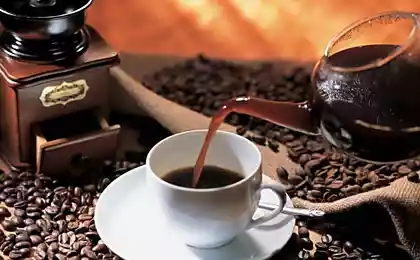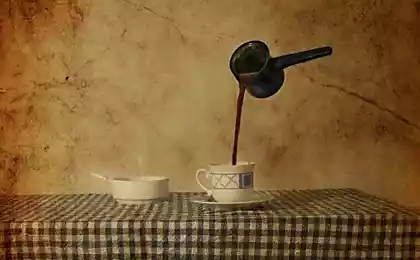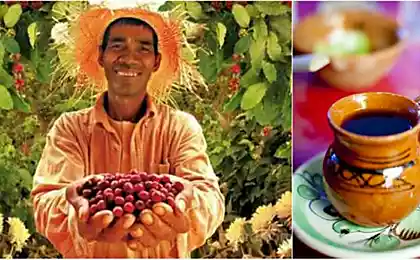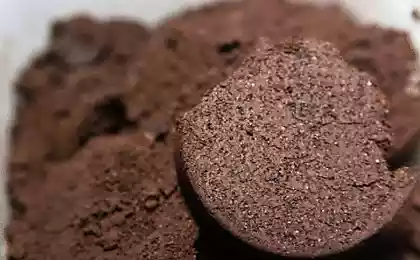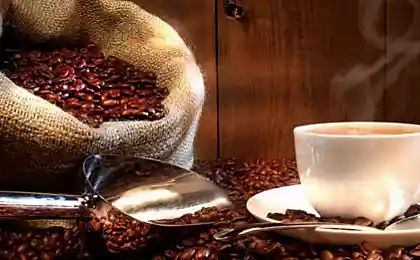186
In what proportions burnt coffee lovers mix Arabica and Robusta
As a rule, coffee houses use two varieties of coffee beans - Arabica and Robusta. Many of us have no idea which one is better. Therefore, it is difficult to choose and the barista’s question is answered by something like “the one that is stronger”.

But it’s not just the caffeine content. For real connoisseurs of invigorating drink behind these words lies a lot of useful information. Let’s figure out what these varieties are, and how Arabica differs from Robusta.
They are collected from different plants Arabian coffee (Latin Coffea arabica) and Congolese coffee (Latin Coffea robusta) are two different species from the Marena family. They differ in appearance: Arabica is a tree, Robusta is a shrub.
And also the features of maturation and the area of growth.
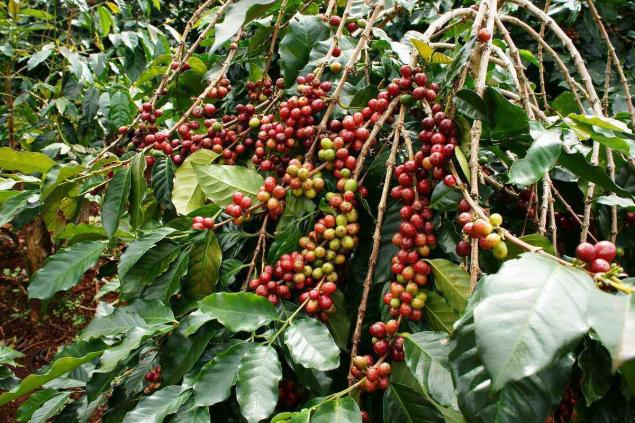
The appearance of Arabica grains is larger. They have an elongated shape and a curved groove in the form of the letter S. Before roasting, the grain is subjected to wet processing, fermentation and drying.

Robusta grains are more rounded and smaller. The strip in the middle of the grain is usually flat. The color of roasted grains is darker and richer. Congolese coffee does not need to be pre-processed before hot.
Experienced coffee lovers determine from which coffee beans are brewed to taste. Arabica is distinguished by a higher content of essential oils. Hence the unique aroma of the drink made from it. Connoisseurs of Arabica note in it citrus and fruit notes, the taste of chocolate and light sourness.

The main advantage of Robusta is its invigorating effect. This is due to the higher caffeine content. Therefore, if your goal is to cheer up in the morning, then Robusta is the right choice. In taste and aroma, this species is poorer than Arabica. The taste is sharper with bitterness and smoky aftertaste.

But what Arabica is inferior to its competitor is the ability to form foam. Therefore, once again ordering espresso do not forget that persistent and thick foam he owes it to Robusta.
About 70% of the world coffee production is Arabica. The remaining 30% is on Robusta and other less common varieties. As we said, Robusta requires less maintenance and is much cheaper. For this reason, its grains are often used to create budget mixes.

It is also popular among the owner of coffee machines. This is explained by the high content of caffeine, thick foam and low price. In addition, Robusta is often mixed with Arabica to improve taste. Thus, they extinguish excessive acidity and give coffee a great astringency.
As you can see, both types of coffee have their advantages and disadvantages. But choosing one thing is not necessary. Coffee lovers have long understood: the secret of the perfect drink is a combination of the bright aroma of Arabica and the invigorating effect of Robusta. And knowing their characteristics, you can correctly mix the grains to achieve a unique taste.

But it’s not just the caffeine content. For real connoisseurs of invigorating drink behind these words lies a lot of useful information. Let’s figure out what these varieties are, and how Arabica differs from Robusta.
They are collected from different plants Arabian coffee (Latin Coffea arabica) and Congolese coffee (Latin Coffea robusta) are two different species from the Marena family. They differ in appearance: Arabica is a tree, Robusta is a shrub.
And also the features of maturation and the area of growth.

- Arabica
It has been known in Ethiopia since the ninth century. It is considered high-altitude coffee, as it grows at an altitude of 600 to 2500 meters. It requires careful care, fertilizer and regular watering. This increases the price of the final product. - Robusta
Discovered in the Congo in the XVIII century. Feels great on the plains. Robusta does not need special care and usually gives a larger crop. Therefore, it is much cheaper than Arabica.
The appearance of Arabica grains is larger. They have an elongated shape and a curved groove in the form of the letter S. Before roasting, the grain is subjected to wet processing, fermentation and drying.

Robusta grains are more rounded and smaller. The strip in the middle of the grain is usually flat. The color of roasted grains is darker and richer. Congolese coffee does not need to be pre-processed before hot.
Experienced coffee lovers determine from which coffee beans are brewed to taste. Arabica is distinguished by a higher content of essential oils. Hence the unique aroma of the drink made from it. Connoisseurs of Arabica note in it citrus and fruit notes, the taste of chocolate and light sourness.

The main advantage of Robusta is its invigorating effect. This is due to the higher caffeine content. Therefore, if your goal is to cheer up in the morning, then Robusta is the right choice. In taste and aroma, this species is poorer than Arabica. The taste is sharper with bitterness and smoky aftertaste.

But what Arabica is inferior to its competitor is the ability to form foam. Therefore, once again ordering espresso do not forget that persistent and thick foam he owes it to Robusta.
About 70% of the world coffee production is Arabica. The remaining 30% is on Robusta and other less common varieties. As we said, Robusta requires less maintenance and is much cheaper. For this reason, its grains are often used to create budget mixes.

It is also popular among the owner of coffee machines. This is explained by the high content of caffeine, thick foam and low price. In addition, Robusta is often mixed with Arabica to improve taste. Thus, they extinguish excessive acidity and give coffee a great astringency.
As you can see, both types of coffee have their advantages and disadvantages. But choosing one thing is not necessary. Coffee lovers have long understood: the secret of the perfect drink is a combination of the bright aroma of Arabica and the invigorating effect of Robusta. And knowing their characteristics, you can correctly mix the grains to achieve a unique taste.
Why literate gardeners sow at least a little buckwheat on their beds
Who of the zodiac signs is destined to carry the cross of loneliness



